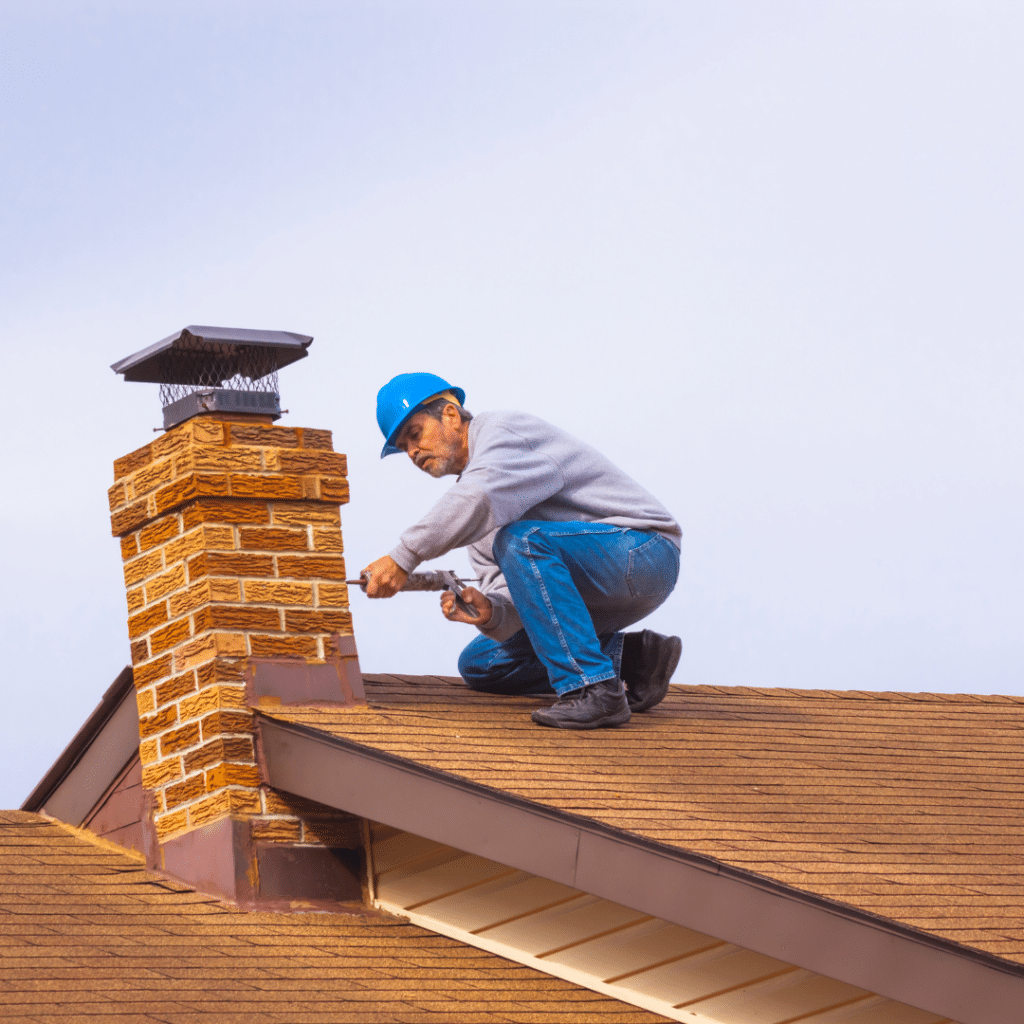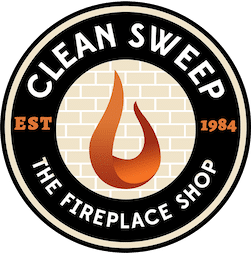A leaking chimney can be a homeowner’s worst nightmare. Not only does it compromise the structural integrity of your home, but it can also lead to costly repairs and potential health hazards. Recognizing the warning signs of chimney leakage is crucial to addressing the issue promptly and effectively.
In this blog post, we will explore the common chimney leakage warning signs that every homeowner should be aware of. Whether you use your fireplace regularly or only occasionally, understanding these signs will help you identify potential leaks before they become major problems.
We will delve into various indicators that could indicate chimney leakage, such as water stains, musty odors, and deteriorating masonry. By learning to recognize these signs early on, you can take the necessary steps to prevent further damage and protect the safety of your home and loved ones.
Additionally, we will discuss the potential causes of chimney leaks, ranging from damaged chimney caps and flashing to cracks in the chimney crown or mortar joints. Understanding the underlying issues will empower you to make informed decisions when it comes to chimney maintenance and repairs.
Furthermore, we will provide practical tips and guidance on what to do if you suspect a chimney leak. From scheduling a professional chimney inspection to considering waterproofing solutions, we will offer insights to help you tackle the problem head-on.
It’s important to remember that chimney leakage is not a problem that should be ignored or taken lightly. By being proactive and attentive to the warning signs, you can safeguard your home and ensure the longevity of your chimney system.
Stay tuned for our upcoming blog posts where we will delve deeper into each warning sign and provide you with expert advice on how to address chimney leakage effectively.
Remember, when it comes to chimney maintenance, prevention is key. Together, let’s identify, address, and resolve chimney leakage issues to maintain a safe and comfortable home environment for years to come.

Understanding Chimney Leaks
A chimney leak occurs when water enters the chimney system, either through the chimney crown, flashing, masonry, or other vulnerable areas. Effects of Water Infiltration: Chimney leaks can cause damage to the chimney itself, as well as the surrounding structures, such as the roof, walls, and ceilings. They can lead to issues like deteriorating masonry, rusted components, mold and mildew growth, and compromised structural integrity.
Signs of a Chimney Leak
Water Stains
Water stains on interior walls, ceilings, or around the fireplace area are common signs of chimney leakage. These stains are caused by water seeping into the chimney system and finding its way into the surrounding structures. Here’s a more detailed description for that specific sign:
Water Stains: Noticeable water stains on interior walls, ceilings, or around the fireplace area.
One of the primary indicators of a chimney leak is the presence of water stains on interior surfaces. These stains often appear as discolored patches or streaks on walls, ceilings, or even on the surrounding areas of the fireplace. They can range in color from light brown to dark yellow or even black, depending on the severity and duration of the leak.
Water stains occur when water from the chimney penetrates the masonry, chimney crown, flashing, or other vulnerable points, and then seeps into the adjacent walls or ceilings. Over time, as the water evaporates or dries, it leaves behind visible marks or discoloration.
It’s important to note that water stains may not always be directly below the chimney or fireplace. Due to the nature of water flow and absorption, stains can appear at a distance from the actual source of the leak. Therefore, it’s crucial to thoroughly inspect the surrounding areas and trace the stains back to their origin to accurately identify the cause of the leak.
If you notice water stains on your interior walls, ceilings, or near the fireplace, it’s essential to take action promptly. Ignoring these stains can lead to further damage, including structural deterioration, mold growth, and potential health hazards. Contacting a professional chimney technician to assess the situation and identify the source of the leak is highly recommended. They can provide the necessary repairs and preventive measures to address the chimney leakage and restore the integrity of your chimney system. Remember, early detection and intervention can save you from more extensive repairs and expenses in the future.
Musty Odors
Musty odors in the vicinity of the chimney or fireplace are another common sign of chimney leakage. These unpleasant smells often indicate the presence of moisture or water infiltration, which can lead to mold or mildew growth. Here’s a more detailed description for this specific sign:
Musty Odors: Unpleasant, damp odors in the vicinity of the chimney or fireplace.
If you notice a musty or damp odor near your chimney or fireplace, it could be a clear indication of chimney leakage. The smell is often described as earthy, moldy, or similar to the scent of a damp basement. This odor is typically caused by the presence of moisture or water that has entered the chimney system and resulted in mold or mildew growth.
When water infiltrates the chimney, it creates a damp environment that provides the perfect conditions for mold and mildew to thrive. These microorganisms produce a distinct musty odor, which can be particularly noticeable when the fireplace is not in use or during periods of high humidity.
It’s important to address musty odors promptly as they can not only be unpleasant but also indicate potential health risks. Prolonged exposure to mold and mildew can lead to respiratory issues, allergies, and other health problems, especially for individuals with sensitivities or compromised immune systems.
If you detect musty odors near your chimney or fireplace, it is advisable to contact a professional chimney technician. They can conduct a thorough inspection to identify the source of the leak and the presence of mold or mildew. Proper remediation, including repairs to the chimney system and addressing any mold issues, will be necessary to eliminate the odors and restore a safe and healthy indoor environment.
Remember, musty odors should not be ignored, as they can be indicative of more significant chimney leakage problems. Taking prompt action will help protect your home, maintain air quality, and ensure the proper functioning of your chimney system.
Water Pooling
Water pooling around the base of the chimney or inside the firebox is a clear sign of chimney leakage. This accumulation of water indicates that there is a breach in the chimney system, allowing water to enter and collect in these areas. Here’s a more detailed description for this specific sign:
Water Pooling: Accumulation of water around the base of the chimney or inside the firebox.
If you observe water pooling around the base of your chimney or inside the firebox, it is a strong indication of chimney leakage. This pooling occurs when water enters the chimney system and collects in these areas rather than properly draining away.
Water pooling around the base of the chimney can be caused by various factors, such as a damaged chimney crown, cracked masonry, faulty flashing, or deteriorated seals. These vulnerabilities allow water to enter the chimney and collect at its base instead of being directed away from the structure.
Similarly, if water is accumulating inside the firebox, it suggests a significant chimney leak that requires immediate attention. This could be due to issues like a faulty chimney cap, damaged chimney liner, or cracks in the chimney structure. Water inside the firebox not only indicates water infiltration but also poses a risk to the fireplace components and can lead to further damage.
It’s crucial to address water pooling promptly to prevent additional damage and potential hazards. Standing water can cause masonry deterioration, rusting of metal components, and even structural issues if left unresolved. Moreover, prolonged exposure to moisture can contribute to mold growth and compromise the safety and efficiency of your fireplace.
If you notice water pooling around the base of the chimney or inside the firebox, it is strongly recommended to contact a professional chimney technician. They will assess the situation, identify the source of the leak, and perform the necessary repairs to ensure proper drainage and prevent further water accumulation.
Remember, water pooling is a clear indication of chimney leakage, and swift action is crucial to safeguard your chimney, fireplace, and the overall integrity of your home.
Efflorescence
Efflorescence refers to the white, chalky residue that appears on the exterior masonry of a chimney. It is a clear sign of moisture penetration and can indicate underlying chimney leakage or water-related issues. Here’s a more detailed description for this specific sign:
Efflorescence: White, chalky residue on the exterior masonry, indicating moisture penetration.
If you notice a white, powdery substance on the exterior surface of your chimney’s masonry, it is likely efflorescence. Efflorescence occurs when water-soluble salts within the masonry materials are dissolved by moisture and then transported to the surface as the water evaporates, leaving behind a visible residue.
The presence of efflorescence is a telltale sign that moisture has penetrated the masonry of your chimney. It can occur when there is a chimney leak, poor water drainage, or excessive moisture exposure. The appearance of efflorescence may vary in intensity, ranging from a slight discoloration to a thick, crusty buildup on the surface.
Efflorescence is an important warning sign as it indicates ongoing moisture-related issues that can lead to further damage. It is crucial to address the underlying cause of the moisture penetration and prevent any potential structural damage or deterioration.
When you observe efflorescence on your chimney, it is recommended to consult a professional chimney technician. They can conduct a thorough inspection to determine the source of the moisture and identify any chimney leakage or related issues. Proper repairs, sealing, and waterproofing measures may be necessary to prevent future efflorescence and protect the integrity of your chimney.
Remember, efflorescence should not be ignored, as it signifies moisture penetration and potential damage to the masonry. Taking action to address the underlying issues will help maintain the longevity and functionality of your chimney system.

Importance of Addressing Chimney Leaks
Addressing chimney leaks promptly is of utmost importance to prevent further damage and ensure the safety and integrity of your chimney and home. Here are key reasons highlighting the importance of addressing chimney leaks:
- Structural Integrity: Chimney leaks can cause significant damage to the structure of your chimney, as well as the surrounding areas of your home. Over time, water penetration can lead to deteriorating masonry, crumbling mortar joints, and weakened chimney components. Ignoring chimney leaks can result in costly repairs to restore the structural integrity of the chimney and prevent potential collapses or hazards.
- Water Damage Prevention: Water infiltrating your chimney can seep into the surrounding walls, ceilings, and attic spaces. This can lead to water damage, including staining, peeling paint, warped wood, and even structural rot. By addressing chimney leaks promptly, you can prevent water damage to your home’s interior, saving you from extensive repairs and restoration work.
- Mold and Mildew Prevention: Moisture from chimney leaks creates a favorable environment for mold and mildew growth. These fungi not only cause unsightly stains and odors but also pose health risks. Prolonged exposure to mold spores can trigger allergies, respiratory problems, and other health issues. By addressing chimney leaks promptly, you can mitigate the risk of mold and mildew growth, ensuring a healthy indoor environment for you and your family.
- Energy Efficiency: Chimney leaks can contribute to energy loss in your home. As water infiltrates the chimney, it can saturate insulation, reducing its effectiveness and causing heat loss during the colder months. By sealing chimney leaks, you can improve energy efficiency and potentially lower your heating and cooling costs.
- Cost Savings: Timely intervention and repairs for chimney leaks can save you from expensive repairs down the line. By addressing the issue early, you can prevent further damage that may require extensive restoration work or chimney rebuilds. Prompt action can also help you avoid secondary issues such as water damage to furniture, electronics, and personal belongings, saving you from additional expenses.
In conclusion, addressing chimney leaks promptly is essential to protect the structural integrity of your chimney, prevent water damage, mitigate the risk of mold growth, improve energy efficiency, and save you from costly repairs. If you notice any signs of chimney leakage, it is highly recommended to consult a professional chimney technician to assess and address the issue promptly. Remember, early detection and intervention can help maintain a safe, functional, and well-preserved chimney system.

Taking Action
- Professional Inspection: Engage a certified chimney professional to assess and identify the source of the leak. We at Clean Sweep The Fireplace Shop can assist!
- Repairs and Maintenance: Depending on the cause, repairs may involve chimney crown sealing, flashing replacement, masonry repairs, or chimney cap installation.
- Preventive Measures: Regular chimney maintenance, waterproofing treatments, and prompt repairs can help prevent future leaks.
In conclusion, chimney leakage is a serious issue that requires immediate attention. Ignoring the warning signs can lead to extensive damage, costly repairs, and potential health hazards. It’s crucial to be aware of the common warning signs of chimney leakage, such as water stains, musty odors, water pooling, and efflorescence.
If you notice any of these signs, it’s important to take action promptly. Engage a certified chimney professional, like the experts at Clean Sweep The Fireplace Shop, to conduct a thorough inspection. They have the knowledge and experience to identify the source of the leak and provide the necessary repairs to restore the integrity of your chimney system.
Remember, addressing chimney leaks early can prevent further damage to your chimney structure, protect your home from water damage, and ensure a safe and healthy indoor environment. Regular maintenance, inspections, and prompt repairs are key to maintaining the longevity and functionality of your chimney.
Don’t let chimney leaks go unnoticed. Stay proactive and prioritize the care of your chimney. Trust the professionals to detect and address any chimney leakage issues, ensuring the safety and comfort of your home for years to com.


